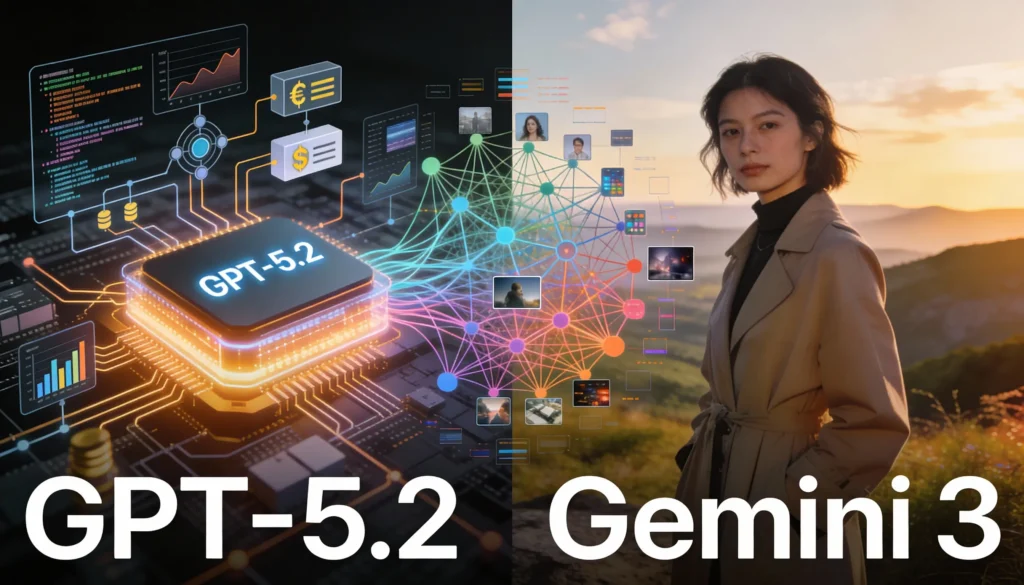So you searched up something about social media ad campaigns ( 👀) because you want to put your business in front of the billions of eyes scrolling through their social feeds – you know it’s a great opportunity for your business to boom, but you’re not sure what to do.
You tried that cool boost post feature, but it didn’t really do anything. A few new followers and likes are cool. But you heard it would lead to new customers – so where are they?
There’s more to social advertising than a boosted post – so let’s dive into how to launch a successful social media ad campaign and take a look at how you can get new customers with all that new engagement on your socials
Here are all the topics we will cover in this guide
Setting Clear Objectives – Everyone’s Step 1
Yes, you did read me writing about new customers, but that’s your ultimate goal. Your business goal. Your daily ‘I need to build my revenue and that means paying customers’ goal. Not your ad campaign goal.
Different goals have different measures and metrics of success.
So let’s quickly go through some objectives you might consider for your next successful social media ad campaign:
Defining Campaign Goals
Brand Awareness: If this is your goal, you’re trying to reach a broad audience – as big as possible. WE WANT EVERYONE TO HEAR ABOUT YOU EVERYWHERE. Metrics like impressions, reach, and engagement actually matter here and aren’t just vanity.
Lead Generation: Also not specifically new sales. Here, we’re looking to capture user information and that’s what you’ll want your creatives focused on. This typically happens after your users are aware of your brand and are now willing to interact. The metrics you’ll want to watch here are lead volume, cost per lead, and conversion rates.
Conversions: Yes, this is what you’ve been reading to – the sales campaigns, the let me get new customers campaigns. Here, ads must be highly persuasive and highly targeted. No need to waste money on targeting massive audience that most likely won’t convert. Aim at those who have focused with you and consistently find themselves going down your funnel (we will talk about this in another blog). Metrics like conversation rate, cost per conversion, and return on ad spend (ROAS) are what you’ll want to use to measure campaign performance and success.
Understanding Your Target Audience - The Step Everyone Just Knows
No, I don’t mean everyone knows this step, I mean where everyone goes like ‘I know the audience just trust me bro.’
No offense (maybe a little), but I’d rather not have to just trust but rather see and analyze the data we have such easy access to – Google, Facebook, and every social platform have paid millions to set it up for us – let’s use it.
Here are some data points you get access to:
- Demographics: Find your audience’s age, gender, location, activity times, memes they find funny (not this one) and other relevant general data that allows you to build personas for you to target with specific ad content and targeting options.
- Behavioral Data: Understand how your customers interact with you and others and target them accordingly with handcrafted funnels built for them. Maybe you want to make sure you get users who came to your website but didn’t make a purchase or users who liked a bunch of your jewelry collection’s images but haven’t gone to your website. Build retargeting campaigns, nurture them, and make your sale.
- Customer Personas: Build out semi-fictional characters of your audience. These personas help you build better campaigns and create better content that focuses on their actual problems and challenges and how to best show them your product or service is the best for it.
Choosing the Right Platforms - Yeah I know you want to be on all of them but that doesn’t mean advertising on all of them
Budgets mean constraints, and that means we can’t spend our money wherever and whenever. Launching your social media ad campaigns on the right platform can really help you get another step closer to success.
Let’s take a look at some of the major ones. (come back and check this when you’re deciding on a platform for your next social media campaign 😁):
Overview of Major Social Media Platforms
Facebook: More than 2.7 billion active users make Facebook a versatile platform for a wide range of advertising options with a massive range of demographics and interests. It’s great for businesses looking to target specific demographics and interests.
Instagram: Owned by META (and where they test all those gorgeous ideas that are mainly not theirs), this visually-driven platform is incredible at showcasing products and services for businesses that have strong visual branding and understand the importance of quality images and recordings.
TikTok: A massively growing platform that took the world by storm, especially younger audiences. This platform is excellent for businesses building their customer base with engaging short-form content and trying to go viral. As a new platform, it has the most potential for you to capitalize on new monetization avenues as compared to other long-established platforms.
X (I still prefer to call it Twitter): A great place for active businesses looking to stay top-of-mind. Campaigns here are pricier, but it gives some more targeting options like targeting according to specific posts on top of general demographics.
LinkedIn: The job board that was – Now, it’s a massive platform for B2B marketing and lets you target professionals directly making it perfect for businesses looking to connect with corporate audiences.
Selecting Platforms That Align with Your Goals
- Audience Alignment: Make sure your audience is active on the platform you’re choosing to advertise on. For example, if you’re looking to target young adults, you’re going to have a better time on Instagram and Tiktok as opposed to the older and more corporate LinkedIn.
- Content Type: Create visuals and creatives that align with the type of content on the platform you’re on. If you’re planning on using a lot of text, Twitter and LinkedIn are better options. If you’re planning on creating killer images and videos, Instagram and TikTok are where you want to be.
Creating Compelling Social Media Ad Campaign Content
Your social media ad campaign is more than just the audience your target and the image you push (although they play some big roles).
Here are some tips to build scroll-stopping ads and launch successful social media ad campaigns:
Tips for Crafting Strong Social Media Ad Campaign Copy:
- Clear Messaging: Make it clear, easy to follow, and directly communicate your value proposition. Remember talk to the human, not the algorithm!
- Call-to-Action (CTA): Tell your audience what to do next. They’re not always looking to buy, they’re scrolling, so have them do something else (like follow for more, or check your profile).
- Emotional Appeal: Build a connection with your audience with relatable elements to drive engagement. Tell a story in as few words as possible.

Importance of Visuals
- High-Quality Images and Videos: Use high-quality visuals and optimize for mobile since that’s usually how people access social media.
- Consistent Branding: Be consistent wherever your audience sees you. Brand colors, fonts, logos, NAP consistency. Don’t confuse anyone who knows you on Facebook if they find you on Instagram.
- Captions and Text Overlays: Add captions and text overlays. (But Rami, it’s video, why am I making the viewer read AND cover what I’m trying to show them?) More often people are watching videos with the sound off. Scrolling through reels/tiktok/shorts in transit and earphones aren’t available – no problem, phone’s muted and the text is there. No reason to scroll past.
Optimizing Social Media Ad Campaigns with Keywords
Using Relevant Keywords in Ad Copy
- Keyword Research: Use tools like Google Keyword Planner, Ahrefs, or SEMrush to find relevant terms your audience uses to find your product/service.
- Natural Integration: Make sure you’re using the keywords naturally in your text and content. You don’t want your ads to look spammy – both the people and the algorithm don’t like it.
- Localized Keywords: Don’t forget your local audience and direct nearby traffic around you to you by using keywords like “SMM agency near me” or “best coffee shop in…”

Analyzing Search Trends and Popular Areas
- Google Trends: This tool will help you identify current trending topics related to your search terms and help you see if people are searching for it on the regular.
- Competitor Analysis: Grab insights from colleagues in the industry and see what they’ve performed with to find what works and what doesn’t.
Launching and Monitoring the Campaign - The Step Everyone Does Later (do it now)
Tips for Monitoring Performance and Adjusting the Campaign
- Platform-Specific Ad Managers: Use the ad managers provided by each platform (e.g., Facebook Ads Manager, LinkedIn Ads Manager) to set up and launch your campaigns. These tools offer detailed targeting options, budget controls, and performance metrics.
- Budget Allocation: Start small and scale up as you gather data and optimize your campaigns. Don’t waste money on something you don’t see working out and invest in what does.
- Ad Scheduling: Use the built-in features of platforms to determine the best time for your ads, and that’s when your users are actively scrolling through the platform.
- Track Key Metrics: Monitor key metrics depending on your objective (mentioned above) and see adjust depending on your campaign’s performance to make data-driven decisions.
- A/B Testing: run A/B tests to compare creatives, ad copy, CTAs, and identify what works best to optimize your campaigns granularly according to your audience.
- Regular Reporting: Do it now and always. Don’t overlook the crucial element you need to adjust strategy, allocate budget, and optimize ad performance.
Key Takeaways
- Define Clear Objectives: Align your ad campaigns with your business goals.
- Choose the Right Platforms: Select platforms where your target audience is most active.
- Create Compelling Ad Content: Use clear messaging, strong CTAs, and high-quality visuals.
- Optimize with Keywords: Integrate relevant keywords naturally into your ad copy.
- Monitor and Adjust: Track key metrics and make data-driven decisions to optimize your campaigns.




